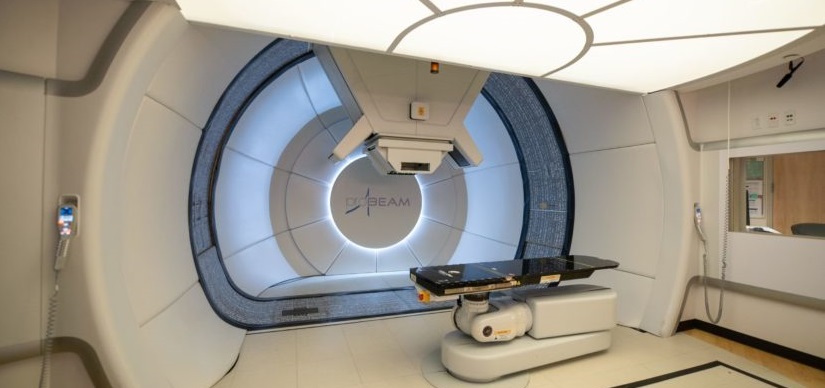Animal ‘Bioreactor’ Produces High-Quality Cells for Bone Marrow Transplantation
Post Date: September 30, 2022 | Publish Date: Sept. 30, 2022

Study led by experts at Cincinnati Children’s is first to report success at generating all cell types contained in murine bone marrow from embryonic stem cells
In an important proof-of-concept study in the field of xenotransplantation, experts at Cincinnati Children’s have demonstrated that embryos from interspecies chimeras can be used as bioreactors to produce bone marrow cells needed for transplant procedures to treat leukemias and other blood disorders.
Details were published Sept. 30, 2022, in the journal eLife.
Chimeras are made when resident cells of the host embryo (in this case, a rat) are combined with donor embryonic stem cells from another animal (in this case, a mouse). As the modified embryo grows, it can produce significant numbers of donor-derived cell types (in this case, all the cell types normally found in mouse bone marrow). Such cells can then be harvested for use in research and eventually cell therapies.
Vlad Kalinichenko, MD, PhD, a developmental biologist with the Center for Lung Regenerative Medicine at Cincinnati Children’s, led an eight-member team that worked for five years to reach this milestone.
“This technology is not ready for the use in humans,” Kalinichenko says. “When this technology ultimately is refined for use in humans, which likely will take several years at least, it will be possible to use this method to generate any type of cells, tissues or organs in a patient-specific manner for regenerative medicine or organ transplantation.”
A Race for Tissue and Cell Supplies
This work is part of a wider race across many fields of medicine to find ways to increase limited supplies of transplantable organs and tissues for people in need. Nationally, more than 100,000 people are waiting for donated hearts, lungs, kidneys, livers and other organs.
Beyond existing supplies of cadaver-donated organs, and some organ gifts from living donors, scientists at Cincinnati Children’s and other centers have made many strides at growing miniature organs from scratch (called organoids). But so far, those efforts have not generated tissues in large enough quantity for transplantation.
Bone marrow is the vital substance within our bones that produces blood cells. When this system is damaged, people can develop various forms of leukemia—a common type of cancer—and a variety of other rare conditions. Efforts have been made to grow bone marrow in a dish, but to date, none have successfully generated all the cell types contained in natural bone marrow.
The idea of xenotransplantation—the use of animal tissues for human transplantation—has been studied for decades. Earlier this year, a gene-modified heart from a pig helped a 57-year-old man in Maryland live for two months after his own heart failed.
Kalinichenko and colleagues are exploring a form of embryonic xenotransplantation called blastocyst complementation.
Essentially, the team collected a small supply of embryonic stem cells from a mouse, which could be amplified in cell culture and gene-edited if needed to remove harmful mutations, then injected them into rat embryos at the blastocyst stage. These mouse-rat chimeric embryos than acted like living bioreactors that helped the mouse cells to differentiate into hematopoietic bone marrow stem cells more rapidly than they would normally do within the mouse or the rat.
Once the team harvested the mouse bone marrow cells, they analyzed them in several ways using much of the most advanced technology in biological research. The meticulous work revealed that the majority of the collected hematopoietic stem and progenitor cells were in fact of mouse origin, rather than endogenous rat cells. Also, the embryonic bioreactors produced all types of bone marrow cells—a crucial milestone for any future human use of this approach.
However, more work needs to be done to perfect this technology before considering any human use. Much like other chimera projects using mice and rats to generate stem cells for other organ types, the Cincinnati Children’s team detected signs of the bone marrow cells migrating to other areas, such as the brain and other organs. For xenotransplantation to be safe, host embryos need to be genetically modified in such ways that the transplanted cells or tissues will stay where they are intended to be.
Next steps
The researchers say there are several more questions to answer regarding this potential method of cell production. They are working on ways to prevent cell migration to multiple organs, and they are exploring how to work with larger animals, such as pigs or sheep, to determine whether these animals can serve as larger-scale sources of transplantable bone marrow.
About this study
Cincinnati Children’s co-authors also included: Bingqiang Wen, Guolun Wang, Enhong Li, Olena A. Kolesnichenko, Zhaowei Tu, Senad Divanovic, and Tanya V. Kalin.
Funding sources for this study include grants from the National Heart, Lung, and Blood Institute (HL141174, HL149631, HL152973, and HL158659).
| Original title: | In vivo generation of bone marrow from embryonic stem cells in interspecies chimeras |
| Published in: | eLife |
| Publish date: | Sept. 30, 2022 |






